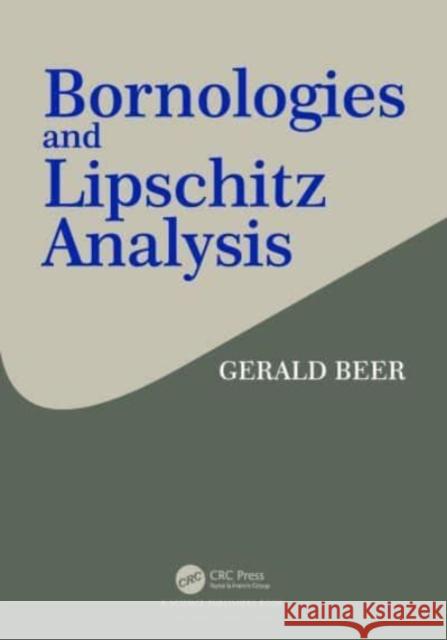Bornologies and Lipschitz Analysis » książka
Bornologies and Lipschitz Analysis
ISBN-13: 9780367497873 / Angielski / Twarda / 2023 / 232 str.
Bornologies and Lipschitz Analysis
ISBN-13: 9780367497873 / Angielski / Twarda / 2023 / 232 str.
(netto: 425,59 VAT: 5%)
Najniższa cena z 30 dni: 428,13
ok. 22 dni roboczych
Dostawa w 2026 r.
Darmowa dostawa!
Bornologies are a useful tool in studying problems in mathematical analysis and general topology. For example, they can be used to characterize those metric spaces on which the real-valued uniformly continuous functions are stable under pointwise products.
This monograph, for the first time in book form, considers the large structure of metric spaces as captured by bornologies: families of subsets that contain the singletons, that are stable under finite unions, and that are stable under taking subsets of its members. The largest bornology is the power set of the space and the smallest is the bornology of its finite subsets. Between these lie (among others) the metrically bounded subsets, the relatively compact subsets, the totally bounded subsets, and the Bourbaki bounded subsets.
Classes of functions are intimately connected to various bornologies; e.g., (1) a function is locally Lipschitz if and only if its restriction to each relatively compact subset is Lipschitz; (2) a subset is Bourbaki bounded if and only if each uniformly continuous function on the space is bounded when restricted to the subset. A great deal of attention is given to the variational notions of strong uniform continuity and strong uniform convergence with respect to the members of a bornology, leading to the bornology of UC-subsets and UC-spaces. Spaces on which its uniformly continuous real-valued functions are stable under pointwise product are characterized in terms of the coincidence of the Bourbaki bounded subsets with a usually larger bornology.
Special attention is given to Lipschitz and locally Lipschitz functions. For example, uniformly dense subclasses of locally Lipschitz functions within the real-valued continuous functions, Cauchy continuous functions, and uniformly continuous functions are presented. It is shown very generally that a function between metric spaces has a particular metric property if and only if whenever it is followed in a composition by a real-valued Lipschitz function, the composition has the property. Bornological convergence of nets of closed subsets, having Attouch-Wets convergence as a prototype, is considered in detail. Topologies of uniform convergence for continuous linear operators between normed spaces is explained in terms of the bornological convergence of their graphs. Finally, the idea of a bornological extension of a topological space is presented, and all regular extensions can be so realized.











